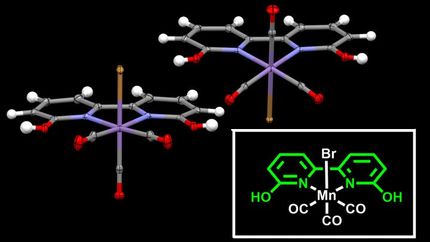Making hydrogen a metal mimic
Advertisement
Scientists have tricked hydrogen into structurally behaving like a metal for the first time, and proven elemental equivalence.
With a single ‘s’ electron, hydrogen is chemically analogous to the group 1 alkali metals in the periodic table, but it typically exhibits pronounced structural differences under ambient conditions. Some similarities have been demonstrated with lithium, the smallest and lightest group 1 metal that has more covalent character, but comparable participation in the solid state has remained elusive.
Now, scientists at the University of Bath in the UK have developed an elegant synthetic strategy to form a pseudocubane motif of ammonium tris(phenol) ligands and lithium or sodium atoms, where one of the latter metals has been replaced by a hydrogen atom. The hydrogen forms the rarely-reported trifurcated 4-centre hydrogen bond. This sort of arrangement is not uncommon for the larger alkali metals, which can accommodate higher coordination numbers, but is not preferred by hydrogen.
Co-author Matthew Davidson, head of the Department of Chemistry and director of the Centre for Sustainable Chemical Technologies (CSCT) at the University of Bath, says their interest lies in gaining a better understanding of how ligands like the amine tris(phenolate) can be used to control reactive metal centres for catalysis. A thorough comprehension of the coordination chemistry and ability to draw conceptual similarities between the reactivity of hydrogen and metals as Lewis acids could help advance areas such as organocatalysis.
Other news from the department science

Get the chemical industry in your inbox
By submitting this form you agree that LUMITOS AG will send you the newsletter(s) selected above by email. Your data will not be passed on to third parties. Your data will be stored and processed in accordance with our data protection regulations. LUMITOS may contact you by email for the purpose of advertising or market and opinion surveys. You can revoke your consent at any time without giving reasons to LUMITOS AG, Ernst-Augustin-Str. 2, 12489 Berlin, Germany or by e-mail at revoke@lumitos.com with effect for the future. In addition, each email contains a link to unsubscribe from the corresponding newsletter.




























































